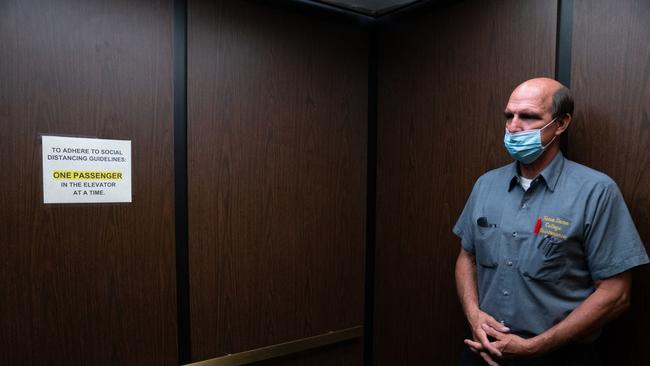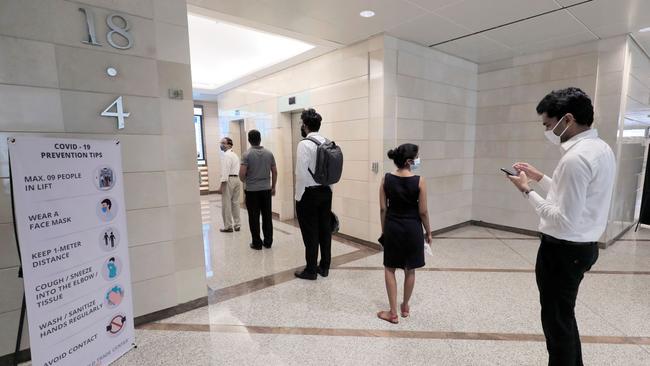COVID-19: Time to lift our game on elevator etiquette
Dragging somebody off an elevator car is not something that building owners are going to relish.

Office building owners are changing how people call for elevators and the rules for riding them to provide passengers more space amid the coronavirus pandemic.
They are restricting capacity to just a few people standing in designated spots, upgrading ventilation systems and regularly sanitising contact points such as handrails and buttons. Advanced automation systems from elevator companies and mobile apps already on the market are attracting higher demand from building owners trying to eliminate passenger crowding in elevator cars and the need to press buttons to select floors or hail an elevator car.
“There’s a lot of anxiety,” said Chris Harihar, who in July returned to his Manhattan office for the first time in four months to find the elevator limited to just four passengers, one for each corner of the car, and in masks.
“It’s going to be an inconvenience,” the communications executive said. “But for the sake of safety, I certainly understand it.”
Some building management companies are training staff to head off conflicts as more tenants confront the new protocols and long wait times on their return to work. Concierges and security guards are being asked to direct elevator traffic in lobbies and to remind riders to wear masks and refrain from talking inside elevators to reduce the spread of the virus.
Michael Colacino, president of office-space brokerage SquareFoot in New York, said elevator usage remained a top concern of tenants contemplating the return to offices, especially the likelihood that some passengers won’t abide by the rules, causing confrontations with other passengers.

“Dragging somebody off an elevator car is not something that building owners are going to relish,” Mr Colacino said. “If you double the wait times, you double the unpleasantness.”
Houston-based Hines Interests conducted a 25-minute training session this month for 1500 of the real estate investment and management firm’s US employees. The training included conflict-resolution strategies and reminded Hines employees that building visitors and tenants are likely to be under stress after months of being away from their workplaces.
“All of our social skills are a little rusty,” said Jessica Newhouse, Hines’s client-experience program manager.
Hines, which has 322 properties in 106 US cities, will urge or require those entering one of its buildings to wear masks in lobbies and on elevators, depending on local restrictions. Building staff would provide masks to those who didn’t have them, Ms Newhouse said.
Building owners also are counting on staggered start times to alleviate rush-hour crowding in lobbies and elevator cars.
Newer elevator banks often feature destination-dispatch systems by which passengers select their floors from a touchpad in the lobby or from an app on their mobile phones before an elevator arrives, instead of waiting to select floors from a bank of buttons once inside the car. The systems pool passengers going to the same or nearby floors, reducing a car’s stops. Now building managers say they can use the technology to limit riders for social distancing and keep people from squeezing into crowded cars.
“We’ve all seen that person running to get an elevator and sticking his hand in the door and saying ‘Wait, one more!’ ” said Ken Schmid, executive vice-president of Americas for elevator manufacturer Kone.
Kone, Otis and Schindler say they have received orders since the pandemic began to upgrade some older elevators to the destination-dispatch systems Other programs can even hail an elevator automatically when an employee or visitor passes through a turnstile with a building pass.
Some building owners are upgrading elevator ventilation systems to expose recirculated air to ultraviolet light to destroy airborne viruses. Elevator buttons and handrails are being covered with antimicrobial coating to limit virus transmissions.
In some cities, building owners are limited on how many people can return to offices. In New York, occupancy is restricted to 50 per cent of the people authorised by building permits. Most buildings are well below that level as employees continue to work from home.




To join the conversation, please log in. Don't have an account? Register
Join the conversation, you are commenting as Logout